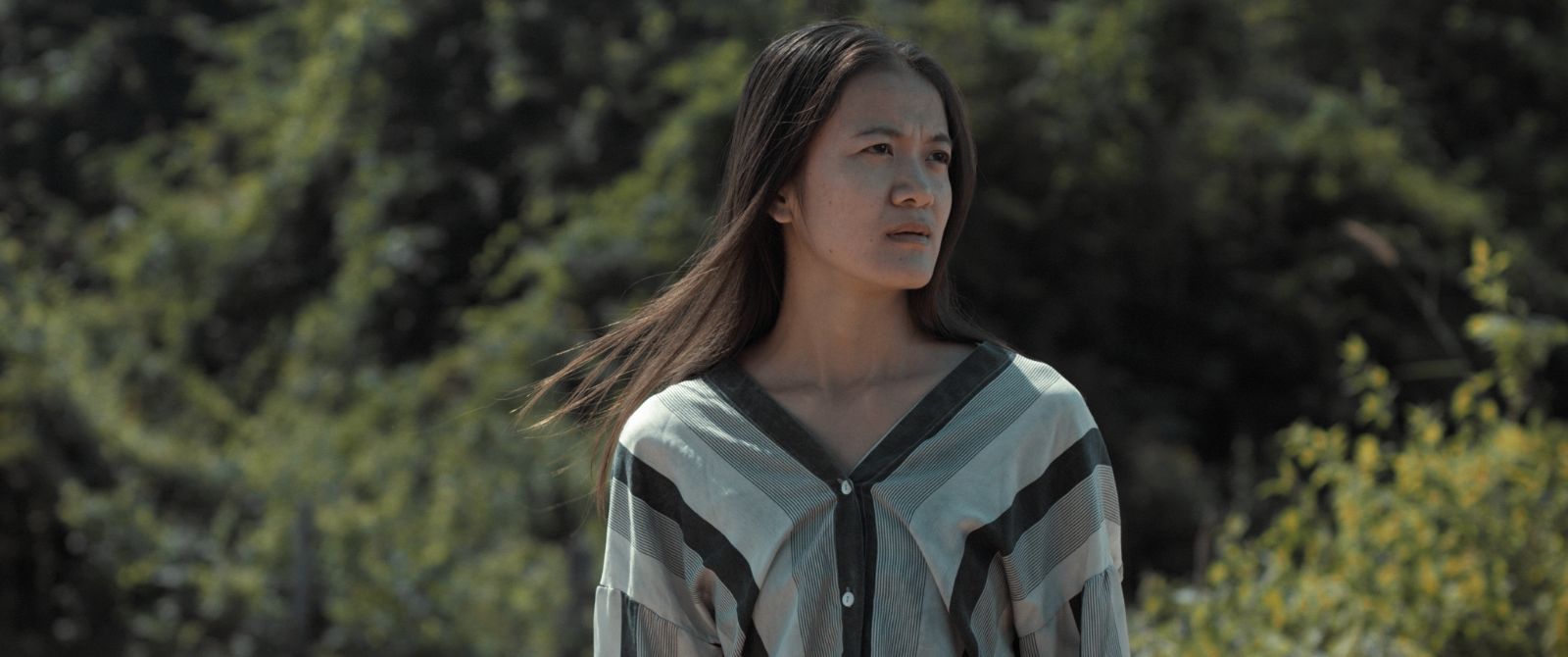Modernization and traditional living collide to strong political effect in Mattie Do’s third feature film The Long Walk. Its first few images see both an unidentified flying ship traveling at warp speed and a rusted-up scooter. We see dirt roads and vegetables being sold in plastic bags in a farmer’s market but currency is now paid through a digital microchip in your wrist. “Oh you’re using an old government chip,” the tender tells The Old Man (Yannawoutthi Chanthalangsy). It seems it’s already out-of-date. Things move fast in The Long Walk while others stay relatively the same.
If there is an initial hindrance in the film’s engrossing structure, it’s that it’s hard to tell what parts are past and what parts are present. But as it progresses we realize this is precisely the point. The Old Man, unnamed and unknown, is a hermit living in a ramshackle house on a small farm near an isolated road. No one really comes around except the ghost of The Girl (Noutnapha Soydara) who walks with him on the road. The Girl died a long time ago in a crash, when the Old Man was The Boy (Por Silatsa) and lived with his mother and father in the same ramshackle hut. The Old Man finds he is able to travel back in time through powers of The Girl to meet his own child self.
Outside the technological advances of currency and supersonic flight, Do leaves it ambiguous whether we are in the time of The Old Man or The Boy, signaling that while drastic advancements have been made in the world, the Laotian countryside seems to have had a haphazard upgrade. As The Boy’s strict and abusive father says to him after a few English-speaking industrialists come to install solar panels on his farmland: “At least we’ll have enough light to watch each other while we starve to death.” Capitalism and Western modes of “advancement” seek to improve traditional ways of living in a manner that prioritizes materialistic improvements rather than quality-of-life improvements. In The Long Walk reality works hand-in-hand with desires of The Old Man to right his past wrongs.
As he becomes enamored with the ability to travel back in time and aims to right the wrongs of his childhood, outcomes of The Old Man’s interference create devastating events for The Boy and his future. These changes—seemingly minute details like broken glass, a necklace, a lock on a door, and stolen money—accelerate events into a future that is no longer recognizable to The Old Man and change who he is as a person in dangerous, disturbing ways. The creeping effects of outside forces seeking to “better” people’s lives without knowing what they need or want is a growing problem in developing countries contending with an unrelenting Western influence of industry.
While the movie works on various philosophical ideas, its base visual template is dark and frank in its depiction of body trauma and violence. Skin is pierced, cut, mangled, torn, and slashed, the camera lingering on the gaping wounds its characters must handle. The movie makes a determined point to depict violence as unpalatable, injuries causing literally crippling effects that don’t really ever fade. Scars from the past never heal, and returning to the wounds can do worse than letting them lay.
The Old Man asks The Girl “how long have we been walking this road? Fifty years? And you’ve never said a word…” She ultimately responds “you could have let me move on, but you didn’t.” In The Long Walk Mattie Do suggests our selfishness is revealed in every act of the divine we try taking upon ourselves. This goes for both the desires to change and hide our past and the desires of the powerful to condescendingly insist upon their way of life.
The Long Walk is now in theaters and arrives on March 1 on VOD.

